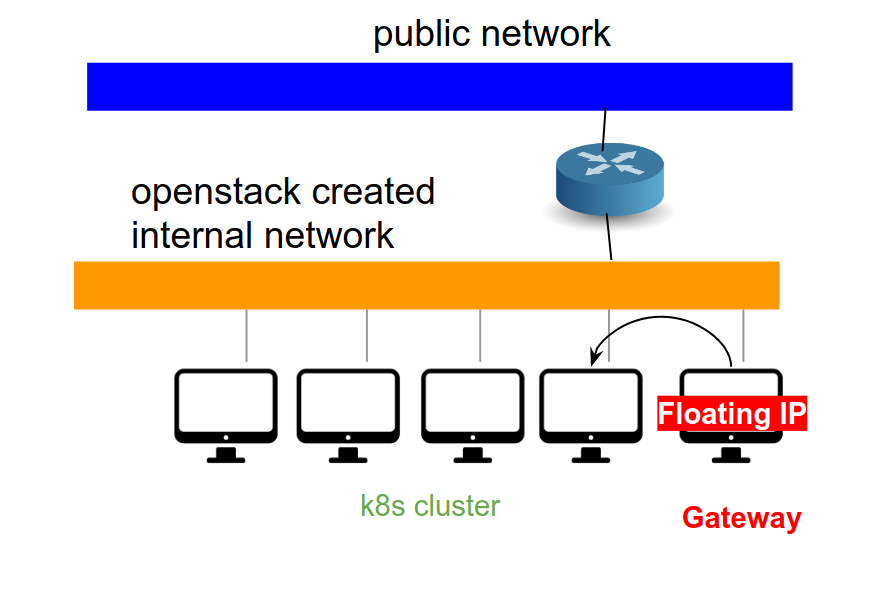...
Kubernetes, also known as K8s, is an open-source system for automating deployment, scaling, and management of containerized applications. If you are not familiar with K8s, see Kubernetes Tutorial presented at a SDSC event in 2022 where you can find relevent slides. There are also some useful introduction materials provided by IBM: 1) Docker and 2) Kubernetes, and those presented by Red Hat: 1) What's a Linux container? and 2) What is Kubernetes?
| Table of Contents |
|---|
Step 0. Prerequisites
- It is best to work from the gateway node of your project, i.e., we assume that you will have a direct network connection to each k8s nodes.
- It seems best to use the openstack cli whenever possible (e.g., to generate kube config files).
- To use the openstack cli commands, you need to setup the envirments. You can download the rc file from the openstack dashboard (API access → Download OpenStack RC file → OpenStack RC file )
- Download the rc file to the gateway node.
...
- Once created, go ahead and resize the cluster (use the "resize" in the dropdown menu of created cluster).
| Fig. 1-6: resize the cluster |
|---|
Step 2. Setup connection to the created k8s cluster
...
| Code Block | ||||||
|---|---|---|---|---|---|---|
| ||||||
> kubectl apply -f sc-cinder.yaml > kubectl get storageclass NAME PROVISIONER RECLAIMPOLICY VOLUMEBINDINGMODE ALLOWVOLUMEEXPANSION AGE cinder-default (default) cinder.csi.openstack.org Delete Immediate false 25h |
Step 4. Deploy your app
...
simple example with Helm 3
...

